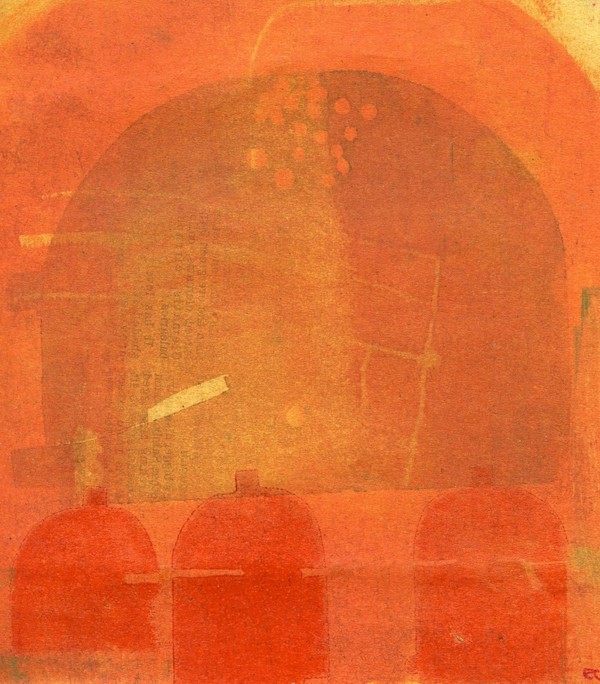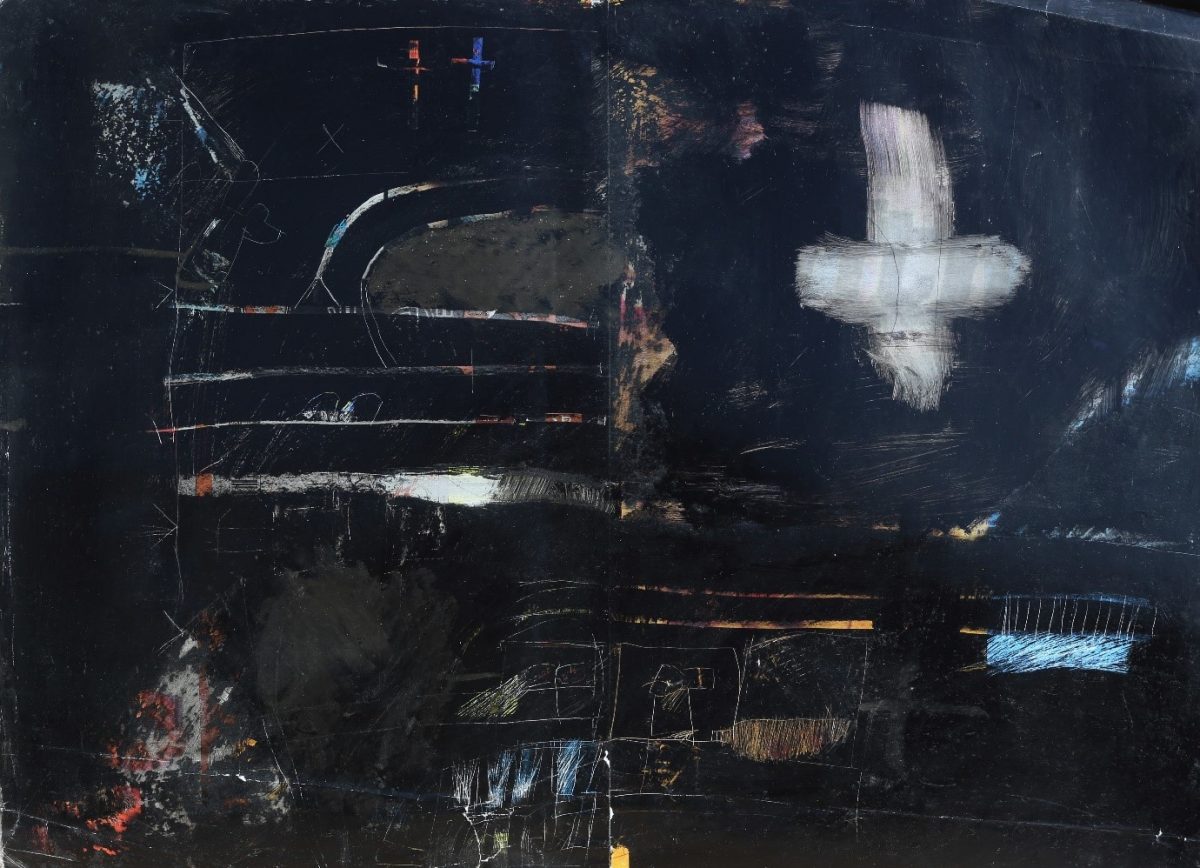Aged 21, after just one week, Roger Cecil walked away from his scholarship at the Royal College of Art to make art on his own terms at home in Abertillery. His decision attracted the attention of the BBC, who interviewed members of his family, community, and college for the film ‘A Quiet Rebel’. Most of those interviewed, for differing reasons, expressed confusion and disapprobation at Cecil’s decision.
Since I was about ten, I wanted to do art. And I’ve done it – RC
Forty-five years later, after a career in which he made the art he wanted in the way he wanted and still found access to galleries and sales, he said: ‘I am very lucky, because … ninety-nine per cent of people, they don’t know what they do, all their life. You imagine that. Terrible isn’t it! To think they go through life and they don’t know what they do. Now, I’m lucky. I’m very fortunate. I knew from when I was about ten. I wanted to do art. And I’ve done it.’

Now widely recognised as one of the most remarkable artists Wales has produced, during his lifetime, Cecil’s work was little known, a secret possessed by insightful collectors and fellow painters. This retrospective, the final exhibition for the foreseeable future to be organised by the artist’s estate following his death in 2015, provides answers to secrets held by Cecil and his art. At its heart, as was also the case in his, was a secret love, a love that combined home, Wales, and landscape.
He devoted himself to painting, producing work of compelling sophistication and beauty while living simply in his parent’s terraced house in the South Wales mining village where he grew up. After his parents’ deaths, the whole house became his studio. To enable this devotion to painting in his own way, he worked for many years as a casual labourer and opencast miner to make ends meet. As he could not afford fine art materials, he often used salvaged or cheap ones – including creosote, reused paper, Polyfilla, house paint, plaster, and grate blacking – putting these to innovative and creative use, including canvas surfaces with a sculpted relief-like appearance.
From his base in the Ebbw Fach valley, Cecil was inspired by the way in which the industrial combined with the natural environment; his pictures evoking the scars of the valley and the grandeur of nature on the mountainsides where he walked, often staying out for nights on end. Peter Wakelin, author of ‘Roger Cecil: A Secret Artist,’ writes that Cecil’s ‘paintings sang with harmonies of greys, pinks, whites, deep brown and coal-black, and they were complex in texture – rough, dry, polished, pitted.’ [i]
His style was abstract or semi-abstract, with landforms and bodies often viewed from above and erotically interlocked. Cartographic symbols were graffitied into layers of paint using lines that walked the landscapes they sketched. He scratched and scraped marks and images into the layered ground of his paintings, the marks being, Wakelin suggests, ‘like the scars in his abused industrial landscape’ but also bringing ‘to mind shamanic objects’ that hint ‘at concealed meanings’.[ii] In 1995, he saw the Royal Academy’s Africa exhibition, becoming fascinated with the role of the artist/shaman as ‘the one who manifests secrets to be decoded or interpreted by the viewer’.[iii]
Also included in the exhibition and giving a further demonstration of Cecil’s idiosyncratic originality are two Next catalogues transformed into working books for his ideas while studying at Central St Martins College of Art and Design. All the pages were covered with white paint before he made a series of paintings using the double-page spread as his canvas. As working books, these paintings are improvisations in which Cecil plays with new ideas and themes. The underlying concept was of the men’s and women’s catalogues making a couple contained and hidden in a box.
Cecil’s work has synergies with that of Roger Hilton (abstraction and eroticism combined), Peter Lanyon (abstraction through aerial perspectives) and early David Hockney (vigorous mark-making surrounding child-like figures). Still, his curved, polished surfaces beguile, and his pitted marked forms fascinate, taking on a mystique and life of their own. He often worked in series, some colour-based using blacks or whites, others thematic, as with the Angharad motif, which is well represented here by ‘Winter Night with Angharad’ and ‘Three Clouds’, among others. He spoke of the Angharad paintings as sensual, with lovely shapes and colours. They do more than remind the viewer of landscapes; he suggested, they communicate feeling. The feeling they share is the earthy passion of love in its physicality of touch and union, making these the most erotic of abstract shapes and scenes.
This fusion of form and feeling was an ambition achieved. When interviewed in 1964 for the BBC film ‘A Quiet Rebel’, Cecil spoke of his worry that at the RCA, each artist would become ‘a bit of everybody’, each influencing the other. He left and went home to ‘do painting my way … the way I feel it.’ His achievement was to translate his love for the Ebbw Fach valley into the mysterious constructions of his forms through which we share his secret love. He did so in his way and on his terms. This exhibition and Wakelin’s book honour one of the great abstract artists of his generation
Roger Cecil – A Secret Artist y Gaer Museum & Art Gallery 3/7/21 – 31/10/21
Roger Cecil: A Secret Artist by Peter Wakelin, Sansom & Company, 2017.
[i] Peter Wakelin, Roger Cecil obituary, The Guardian, 18 Mar 2015 – The Guardian
[ii] Peter Wakelin, Roger Cecil: a secret artist, Apr 2017, ArtUK
[iii] Roger Cecil, Writings, 1997, quoted in Peter Wakelin, Roger Cecil: a secret artist, Apr 2017, ArtUK – Art UK

